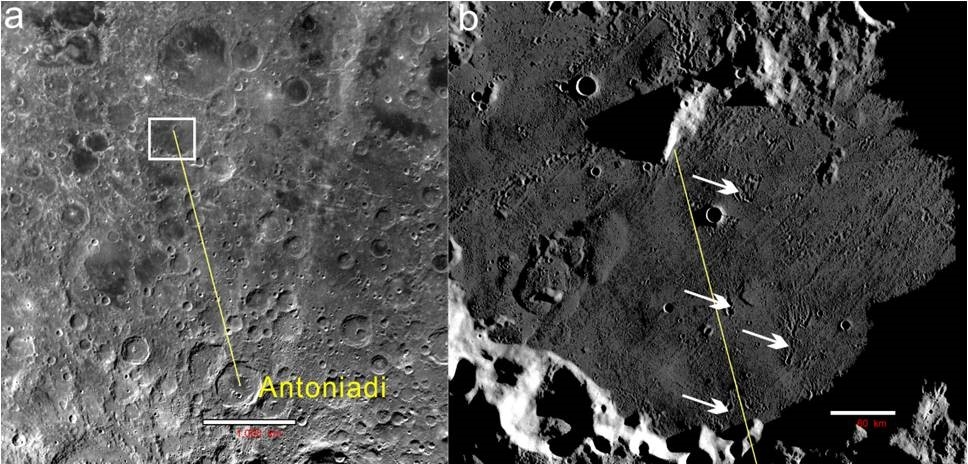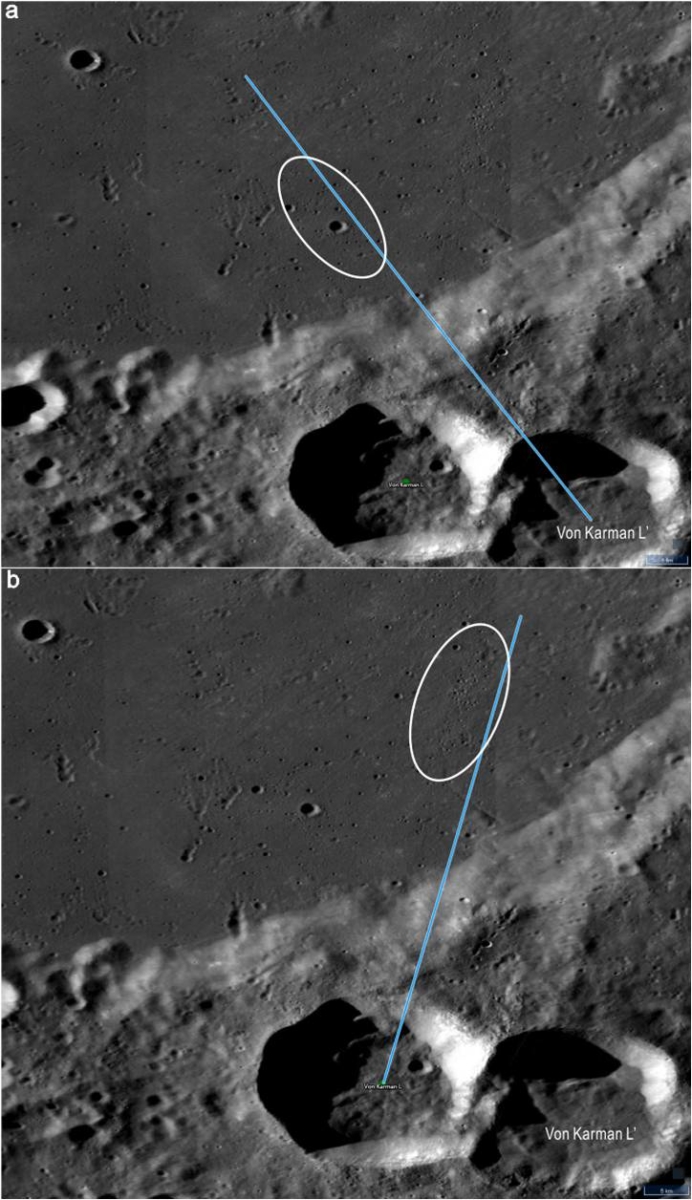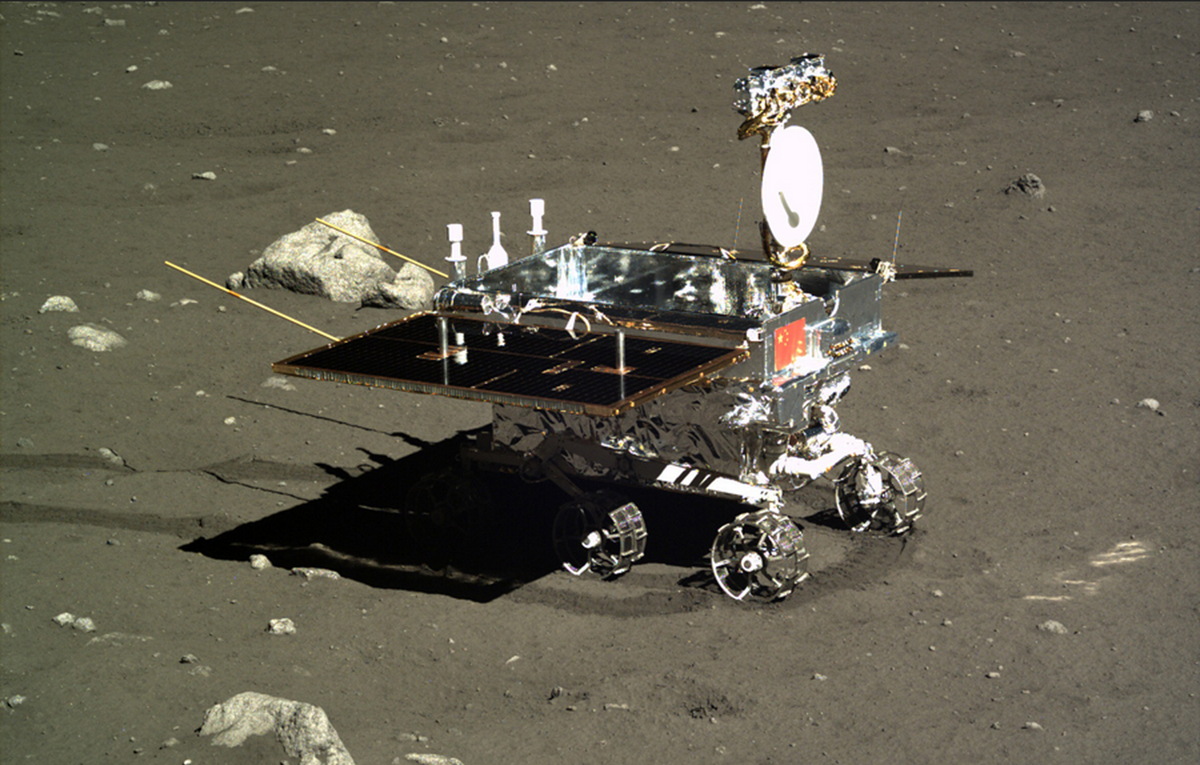
China's Sending a Probe to the Moon's Far Side. Here's Where It Will Land

If all remains on track, a robotic Chinese moon mission called Chang'e 4 will launch late this year to attempt the first landing on the far side of the moon in history.
Chang'e 4 will head for the Von Kármán Crater, within the moon's South Pole‐Aitken (SPA) basin. The scientific instruments of this far-side mission, mounted on a lander and a rover, will analyze both the surface and the subsurface of this region.
The SPA basin is the largest known impact structure in the solar system. It is the place to go to answer several important questions about the moon, including its internal structure and thermal evolution, scientists have said. [China's Moon Missions Explained (Infographic)]
The 115-mile-wide (186 kilometers) Von Kármán Crater lies in the northwestern SPA basin. The topography of the landing region is generally flat.
Secondary craters and ejecta materials cover most of the area's mare (volcanic basalt) unit and can be traced back to at least four source craters: Finsen, Von Kármán L, Von Kármán L' and Antoniadi. The region also features extensive sinuous ridges and troughs.
New information
A recent paper, led by Jun Huang of the School of Earth Sciences at the China University of Geosciences in Wuhan, lays out some key characteristics of Chang'e 4's targeted landing zone.
The study presents a detailed 3D geological analysis of the nature and history of the Von Kármán Crater. The researchers found that the region contains far-side mare basalts affected by linear features and ejecta material from a wide range of surrounding craters.
Get the Space.com Newsletter
Breaking space news, the latest updates on rocket launches, skywatching events and more!
The results provide a framework for the Chang'e 4 mission to carry out on-the-spot exploration, the scientists wrote in the study, which was published in May in the Journal of Geophysical Research: Planets.
Relay satellite
Already in place for the upcoming mission is the Chinese relay satellite Queqiao. It will enable communications between mission control here on Earth and Chang'e 4, as well as future far-side missions.
Queqiao lifted off in May atop a Long March 4C rocket from China's Xichang Satellite Launch Center. The relay spacecraft has made its way to a halo orbit around the Earth-Moon Lagrange Point 2, a gravitationally stable spot beyond the far side of the moon.

Lander, rover instruments
The Chang'e 4 lander and rover were designed as backups for the successful Chang'e 3 mission, which launched in December 2013 and landed the rover Yutu on the lunar surface. So, some of the science payloads on Chang'e 4 are similar to those of its predecessor, such as a landing camera, a terrain camera, a panoramic camera on the lander and a visible/near-infrared imaging spectrometer, along with two ground-penetrating radars able to reveal the subsurface structure of the landing area.
Additional instruments on the lander are a low-frequency radio spectrometer, which will perform joint space-physics observations with the low-frequency radio spectrometer on the Queqiao relay satellite. [China's Yutu Rover Moon Mission in Photos]
Also onboard Chang'e 4 is a German lunar neutron and radiation dose detector to explore the surface radiation environment of the far side.
A new instrument on the rover is the Swedish neutral atom detector designed to study the interaction between the solar wind and lunar surface materials.

Lunar mini biosphere
In addition, a lunar micro-ecosystem is included for astrobiology experiments and public outreach. According to China's state-run Xinhua news agency, Chang'e 4 will carry a tin containing seeds of potato and arabidopsis, a small flowering plant related to cabbage and mustard. It may also tote along silkworm eggsM.
This "lunar mini biosphere" experiment was designed by 28 Chinese universities, led by southwest China's Chongqing University. The cylindrical tin, made from special aluminum-alloy materials, weighs roughly 7 lbs. (3 kilograms).
The tin also contains water, a nutrient solution and air. A tiny camera and data-transmission system will allow researchers to keep an eye on the seeds and see if they germinate on the moon.
Leonard David is author of "Mars: Our Future on the Red Planet," published by National Geographic. The book is a companion to the National Geographic Channel series "Mars." A longtime writer for Space.com, David has been reporting on the space industry for more than five decades. Follow us @Spacedotcom, Facebook or Google+. This version of the story published on Space.com.
Join our Space Forums to keep talking space on the latest missions, night sky and more! And if you have a news tip, correction or comment, let us know at: community@space.com.

Leonard David is an award-winning space journalist who has been reporting on space activities for more than 50 years. Currently writing as Space.com's Space Insider Columnist among his other projects, Leonard has authored numerous books on space exploration, Mars missions and more, with his latest being "Moon Rush: The New Space Race" published in 2019 by National Geographic. He also wrote "Mars: Our Future on the Red Planet" released in 2016 by National Geographic. Leonard has served as a correspondent for SpaceNews, Scientific American and Aerospace America for the AIAA. He has received many awards, including the first Ordway Award for Sustained Excellence in Spaceflight History in 2015 at the AAS Wernher von Braun Memorial Symposium. You can find out Leonard's latest project at his website and on Twitter.









